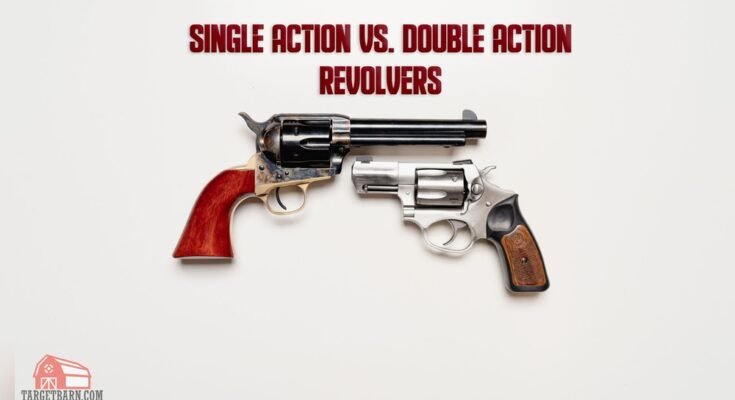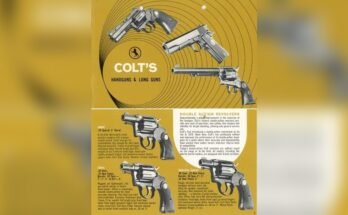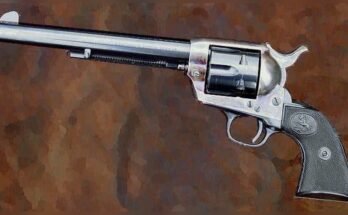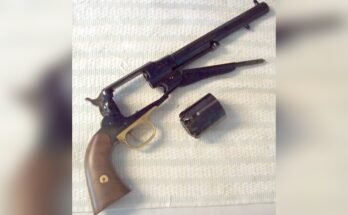Are you curious about the difference between a single-action and a double-action revolver? Whether you’re new to firearms or just want to understand how these guns work, knowing the key features can help you make smarter choices.
This simple guide will clear up the confusion, showing you exactly how each type operates and what that means for you. Keep reading to discover which revolver might suit your needs best—and why this knowledge could change the way you think about shooting.
Single-action Revolver Basics
The single-action revolver is a classic type of handgun. It has a simple design that many people find easy to use. This revolver requires the shooter to manually cock the hammer before each shot. This action sets the gun to fire when the trigger is pulled.
Many single-action revolvers have a smooth trigger pull. This makes aiming and shooting more precise. Understanding how these guns work helps appreciate their role in history and today.
How It Works
To fire a single-action revolver, you first pull back the hammer by hand. This action rotates the cylinder to align a new cartridge with the barrel. Then, pulling the trigger releases the hammer. The hammer strikes the firing pin, igniting the cartridge.
After shooting, you must cock the hammer again to fire another shot. This design means the trigger only performs one action: releasing the hammer. The process is simple but requires more steps than other revolver types.
Historical Significance
Single-action revolvers played a big role in the 19th century. They were popular during the American Old West period. Many famous gunslingers used single-action revolvers for self-defense and law enforcement.
These revolvers helped shape the image of the cowboy and frontier life. Their reliability and ease of repair made them favorite weapons at the time. Today, they remain symbols of that era and are collected by enthusiasts worldwide.
Common Uses
Single-action revolvers are often used for sport shooting and hunting. Their accuracy makes them good for target practice. Many shooters enjoy the challenge of manually cocking the hammer each time.
Collectors and reenactors also value these revolvers. They are used in historical reenactments and cowboy action shooting competitions. The simple mechanics attract those who prefer traditional firearms.
Double-action Revolver Basics
Double-action revolvers are common firearms used worldwide. They offer a unique way to fire shots quickly and with less effort. Understanding their basics helps you see why many choose them over single-action revolvers.
These guns can fire with just one pull of the trigger. This feature makes them faster and easier to use in many situations.
Mechanism Explained
Double-action revolvers work by pulling the trigger to both cock and release the hammer. The trigger pull is longer and stronger than in single-action guns. This action rotates the cylinder, aligning a new round with the barrel. The shooter does not need to manually cock the hammer before each shot.
Advantages Over Single-action
Double-action revolvers allow quicker follow-up shots. The user can fire repeatedly without moving their hand. They are also safer to carry because the longer trigger pull reduces accidental shots. These guns often have a built-in hammer block safety. This feature prevents the hammer from striking unless the trigger is fully pulled.
Typical Applications
Law enforcement officers often prefer double-action revolvers. They provide reliable performance and quick shooting in emergencies. Many people also choose them for self-defense at home. Their ease of use makes them good for beginners. Hunters and sport shooters sometimes use these revolvers for target practice too.
Trigger Mechanism Differences
The trigger mechanism is a key difference between single-action and double-action revolvers. It affects how the gun fires and how the shooter handles it. Understanding these differences helps in choosing the right revolver for your needs.
Trigger Pull Comparison
Single-action revolvers require the shooter to manually cock the hammer before pulling the trigger. This action makes the trigger pull lighter and shorter. Double-action revolvers do not need the hammer cocked manually. Pulling the trigger both cocks and releases the hammer. This results in a longer and heavier trigger pull.
Firing Speed And Control
Single-action revolvers offer better control due to the lighter trigger pull. Shooters can fire with more precision. Double-action revolvers allow faster shooting since cocking the hammer is not needed. However, the heavier trigger pull may reduce accuracy slightly for some users.
Reloading Process
Reloading single-action and double-action revolvers is mostly similar. Both types usually use a swing-out cylinder or a loading gate. The main difference lies in handling the hammer after reloading. Single-action guns require manual cocking before firing again. Double-action guns are ready to fire without extra steps.

Accuracy And Handling
Accuracy and handling are key factors in choosing between single-action and double-action revolvers. These elements affect how well a shooter can aim and control the gun. Each type offers unique traits that influence shooting experience. Understanding these differences helps in making a better choice for your needs.
Impact On Shooting Precision
Single-action revolvers require the hammer to be cocked before each shot. This action creates a lighter trigger pull, which helps steady the aim. The lighter pull often leads to better precision. Double-action revolvers pull the hammer back as the trigger is pressed. This results in a heavier trigger pull that can affect accuracy. Shooters may find it harder to keep the gun steady with a double-action trigger. For precise shooting, many prefer the single-action mechanism.
Ergonomics And Grip
The shape and size of the grip play a big role in handling. Single-action revolvers often have grips designed for steady hold and control. These grips can feel more natural for slow, careful shooting. Double-action revolvers usually have thicker grips to help manage recoil. This can make them feel bulkier but offers better support for quick shots. Choosing the right grip depends on hand size and comfort. Proper grip improves control and reduces fatigue.
Recoil Management
Recoil affects how fast and accurately you can shoot again. Single-action revolvers tend to have less recoil because of their design and lighter trigger pull. This allows shooters to maintain better control after each shot. Double-action revolvers can have stronger recoil due to the heavier trigger pull and faster shooting style. Managing recoil well is important for follow-up shots. Good recoil control helps keep the gun steady on target.
Maintenance And Durability
Maintenance and durability are key for any revolver, whether single-action or double-action. These factors affect how well the gun works and how long it lasts. Proper care keeps the revolver safe and reliable. Understanding the differences in maintenance needs helps owners make smart choices.
Cleaning Requirements
Single-action revolvers need regular cleaning after use. Dirt and powder buildup can block the cylinder and barrel. Cleaning the moving parts prevents jams and misfires. Double-action revolvers have more complex mechanisms. They require careful cleaning of the trigger and hammer parts. Using the right tools and solvents keeps both types working smoothly.
Wear And Tear Factors
Single-action revolvers have simpler parts that wear slowly. The hammer must be manually cocked before each shot, reducing some stress. Double-action revolvers experience more wear because the trigger both cocks and releases the hammer. This extra motion causes parts to wear faster. Frequent firing speeds up wear in both types but especially in double-action models.
Longevity Of Components
Single-action revolver parts often last longer due to simpler design. Fewer moving parts mean fewer failures. Double-action revolvers have more springs and levers. These components may need replacing sooner. Proper maintenance extends the life of all parts. Regular inspection helps spot worn components early. This prevents bigger problems and costly repairs.
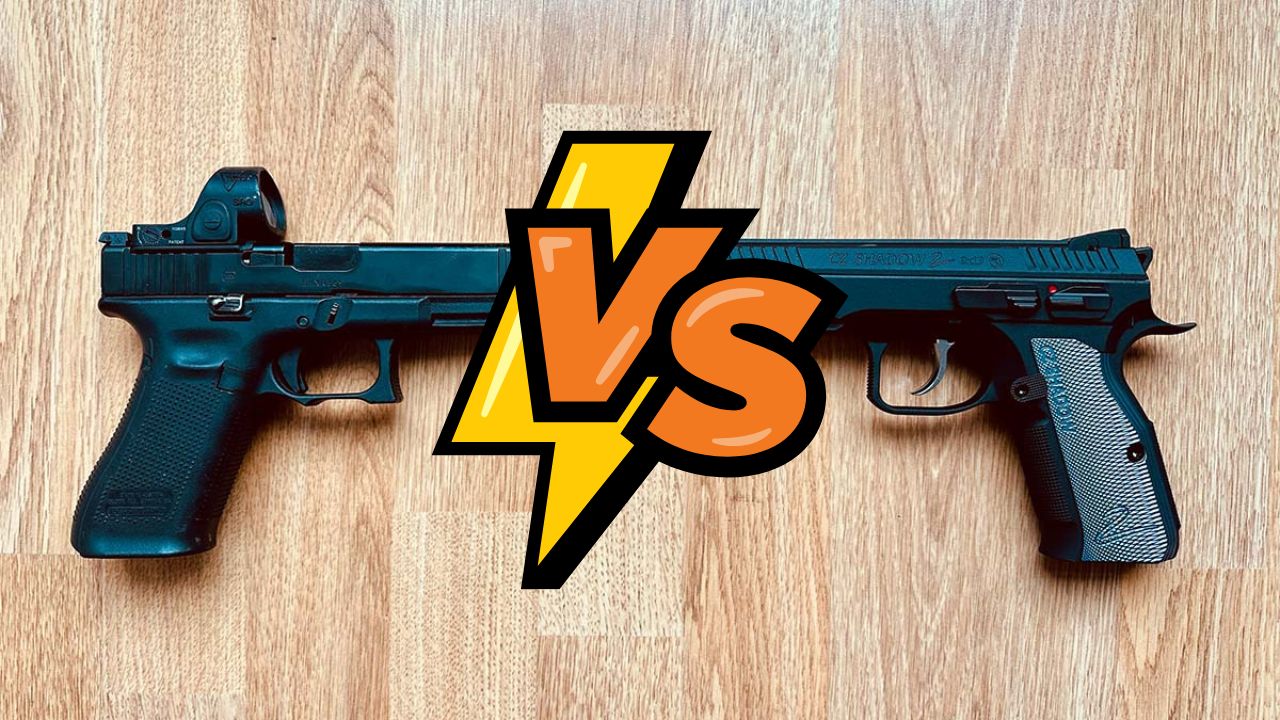
Choosing Between Single And Double-action
Choosing between a single-action and double-action revolver depends on several key factors. Each type has unique features that affect performance and handling. Understanding these differences helps pick the best option for your needs. Consider the intended use, your skill level, and safety rules before deciding.
Purpose And Environment
Think about where and how you will use the revolver. Single-action revolvers require manual cocking before each shot. This makes them slower but precise. They suit hunting and target shooting well. Double-action revolvers fire with just a trigger pull. They allow faster shots, good for self-defense or police work. Choose based on speed need and shooting conditions.
User Experience Level
Beginners might find double-action revolvers easier to use. The trigger pull cocks and fires in one motion. It lowers the chance of mistakes under pressure. Single-action guns need more practice to handle safely. Experienced shooters may prefer single-action for its accuracy and control. Match your choice to your comfort and skill with firearms.
Legal And Safety Considerations
Check local laws about revolver types. Some places have restrictions on double-action or single-action guns. Safety matters too. Single-action revolvers often have lighter triggers, which can cause accidental firing if careless. Double-action models tend to have heavier triggers, adding a safety layer. Always follow firearm safety rules regardless of the action type.
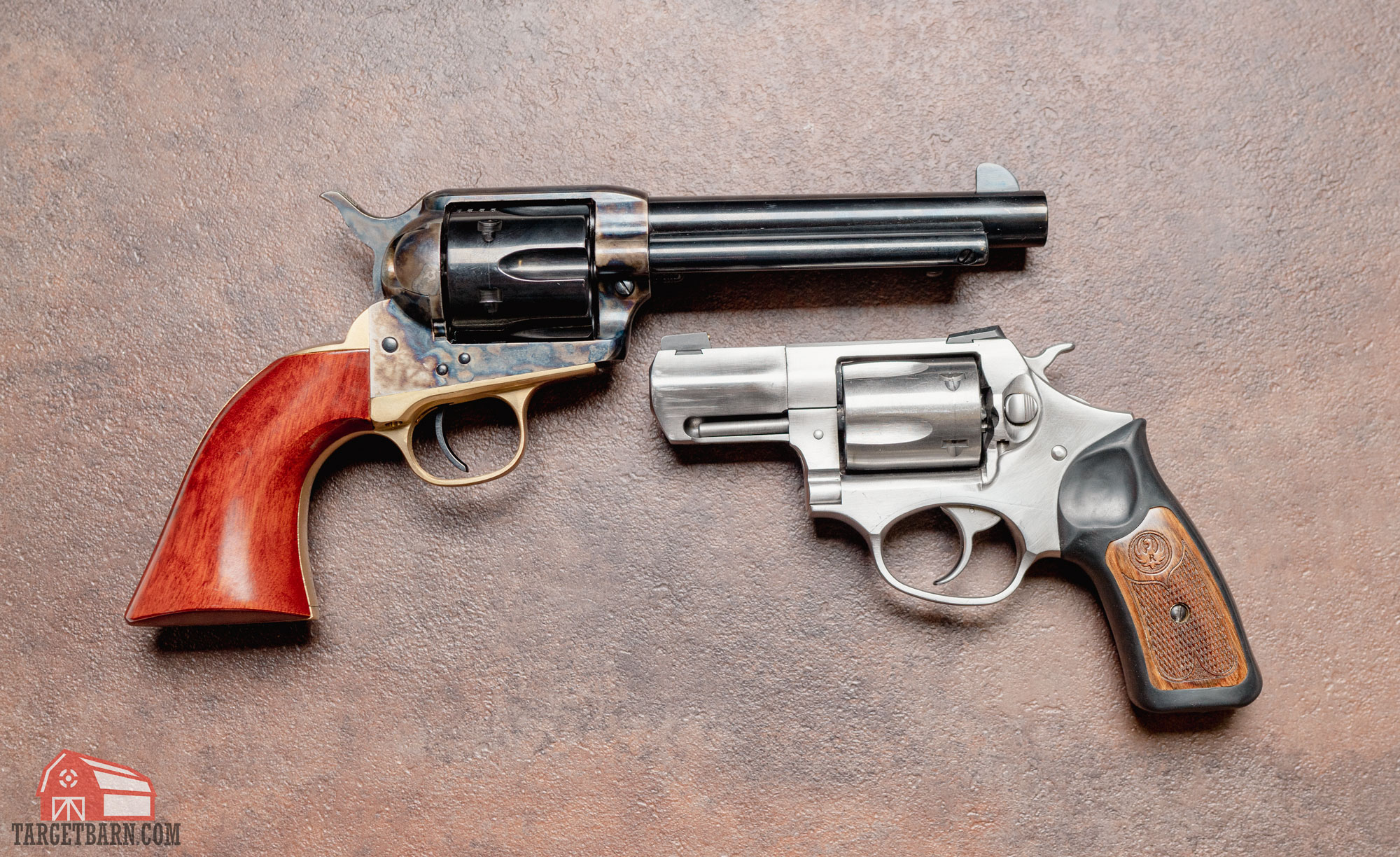
Frequently Asked Questions
What Is A Single-action Revolver?
A single-action revolver requires manually cocking the hammer before each shot. Pulling the trigger then releases the hammer to fire. It offers a lighter trigger pull and is often preferred for accuracy and traditional use.
How Does A Double-action Revolver Work?
A double-action revolver cocks and releases the hammer with a single trigger pull. This allows faster shooting without manual cocking. It has a heavier trigger pull but offers quicker follow-up shots, ideal for self-defense and practical use.
Which Revolver Is Better For Beginners?
Single-action revolvers are often easier for beginners due to their light trigger pull. However, double-action revolvers provide faster shooting and are safer with heavier triggers. Choice depends on the user’s purpose and comfort with handling firearms.
Can You Switch Between Single And Double Action?
Some revolvers are dual-action, allowing both single and double-action firing modes. This versatility lets shooters choose precision or speed as needed. However, pure single-action or double-action revolvers do not support switching modes.
Conclusion
Choosing between single-action and double-action revolvers depends on your needs. Single-action offers lighter trigger pulls but requires manual cocking. Double-action fires faster with one trigger pull but needs more effort. Both types have unique features that suit different users. Understanding their differences helps you pick the right revolver.
Safety, ease of use, and shooting style matter most. Take your time to learn each type well. This knowledge makes shooting safer and more enjoyable.
